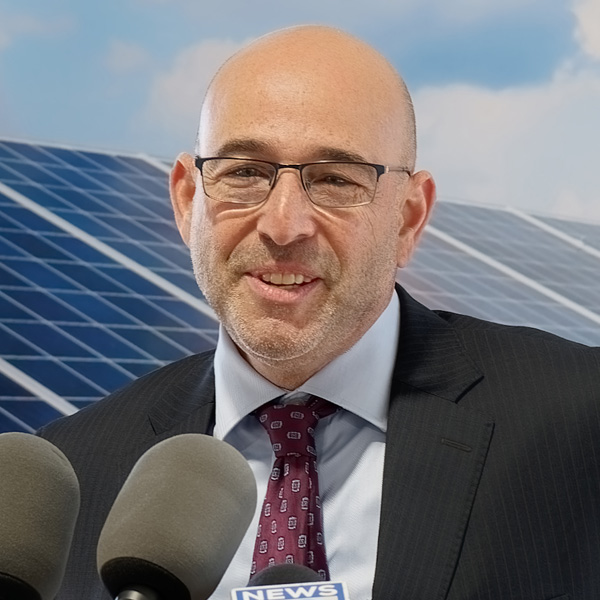FERC got more than 60 comments on its advanced notice of proposed rulemaking (ANOPR) on dynamic line ratings (DLRs), with utilities and grid operators urging caution on new requirements while state regulators, consumers and grid-enhancing technologies (GETs) firms want mandates. (See related story: FERC Gets Mixed Advice on How Quickly to Move on DLR Requirements.)
The ANOPR proposes requiring transmission providers to reflect the impacts of solar heating on transmission line ratings, reflect forecasts of wind on certain lines, ensure transparency in the development and implementation of DLRs and enhance data-reporting practices in non-RTO regions to identify candidate lines to reflect wind conditions.
PPL is an investor-owned utility with subsidiaries in the Eastern Interconnection that have been testing DLRs. It said they promote operational performance and save customers money.
“By measuring wind, sag and conductor temperature directly, a machine-learning tool can fine-tune the external forecasts for each transmission facility,” PPL said. “When these forecasts are accurately incorporated into day-ahead models, RTOs like PJM can dispatch lowest-cost generation where it might otherwise be blocked by transmission line congestion.”
But the ANOPR needs to better consider where DLR implementation would be most effective. PPL argued that FERC should reconsider mandating that transmission owners calculate and apply ratings using a specific methodology.
“Doing so would upend the risk tolerances built into the utilities’ existing ratings methodologies and limit their ability to allocate acceptable risks throughout their systems,” PPL said.
The fundamental question for line ratings is how much thermal energy to allow, which has never been dictated by regulators and always left to transmission owners, informed by good utility practice.
“FERC taking more control of the factors being used in ratings calculations means that regulators in Washington, D.C., not the owners of the assets who are responsible for their reliability, safety and longevity, are the ones deciding on how much risk is acceptable,” PPL said. “FERC does not have, and can never have, all the relevant information needed to make these decisions.”
Dominion Energy is working with the U.S. Department of Energy to test out DLRs around “data center alley” in Loudoun County, Va., which is home to the largest concentration of the facilities in the world and is a major factor in the load growth in PJM. The utility argued that the technology makes more sense for short-term operational efficiencies or for contingencies.
“Short-term DLR benefits are not a substitute for the transmission planning necessary to ensure long-term reliability,” Dominion said.
The New York Transmission Owners also voiced some support for GETs in general, but do not want FERC to move ahead with DLR requirements now.
“Rather than ordering prescriptive DLR requirements, the commission should continue to promote and explore DLR technologies and allow regional flexibility for TSPs and TOs to develop targeted DLR programs that make sense for their respective systems,” they said. “For example, much of the Consolidated Edison transmission network is underground, and DLR implementation clearly should not be required for transmission lines that are not exposed to sun or wind.”
The issues in New York go beyond underground lines in Manhattan, with the NYTOs telling FERC that much of their system is getting old and it would make more sense to replace aging infrastructure rather than try to squeeze a few more efficiencies out of it.
ISO/RTOs also Preach Caution
PJM told FERC it supports DLRs in high congestion areas as a real-time optimization tool. But it said FERC should let the benefits of Order 881 that mandated that the related Ambient-Adjusted Ratings (AARs) in ISO/RTOs be better understood before moving onto DLRs. Order 881’s requirements for AARs go into effect in July 2025 and will have line ratings take temperature into account, which has some overlap with DLR benefits.
PJM supports delaying DLR implementation until after Order No. 881 requirements provide the data “needed to identify changed transmission line congestion patterns,” the RTO said. “The potential benefits of DLR cannot be reliably estimated before implementation of Order No. 881.”
Projecting the cost-benefit ratio of using an ANOPR-adjusted rating on a congested facility as compared to a seasonal rating “may grossly inflate the benefits if not adjusted for the efficiencies gained using an Order 881 AAR,” it added.
MISO supports using DLRs as another tool to help reliably deal with the changes its system is going through, but it argued they do not make sense everywhere. It also highlighted overlap with Order 881.
“DLRs, when selectively deployed, can support the efficient use of existing transmission infrastructure,” MISO said. “But they are not a long-term solution to meet emerging system needs. Like AARs, DLRs can provide operational benefits but cannot solve significant long-range transmission problems. Development of additional transmission investment will be critical to meeting the challenges of grid transformation.”
CAISO said DLRs make sense where they materially enhance the reliability and efficiency of transmission operations. “Requiring the blanket use of dynamic line ratings — even through a phased implementation and subject to an exception process as set forth in the ANOPR — may not advance reliability and efficiency in all cases,” CAISO said.
State Regulators and Consumer Groups Support ANOPR
The Organization of MISO States said the reforms in the ANOPR are needed to ensure reasonable rates and the use of DLRs will increase efficiency and reliability while cutting costs to consumers.
“The ANOPR proposes additional requirements beyond Order No. 881 that require line ratings that account for solar heating, wind speed and wind direction,” OMS said. “Without taking these conditions into consideration, transmission owners are likely not fully utilizing the available capacity on transmission lines.”
The proposal builds on five years of work looking into GETs with AARs expected to save up to 15% of total congestion in MISO. While many of the benefits come from pushing more energy through lines, OMS noted that DLRs can lower them with a study out of Massachusetts showing that effect 22 to 27% of the time.
“This lowering of transmission line ratings also suggests that DLRs have additional long-term benefits because overrating a transmission line can lead to safety risks and premature degradation of a transmission line,” OMS said.
The Organization of PJM States (OPSI) supports the reasonable implementation of DLRs, which is in line with its mission of ensuring reliable service at affordable rates. But the group did caution FERC against being overly prescriptive and ensuring DLRs can be implemented strategically.
Utilities have been too slow in taking up the technology, which OPSI said requires some regulatory mandates. In PJM’s case, OPSI said the issue was with a lack of competition in the transmission planning process, which in the 2022 Regional Transmission Expansion Plan Window 3 procured $5 billion worth of new lines with zero DLRs.
“PJM itself has made the case that the sponsorship model is insufficiently competitive,” OPSI said. “In its comments in the ANOPR that eventually became Order No. 1920, PJM noted that only three total project selections were awarded to non-incumbent developers out of 185 total project awards. According to PJM, the reason for this mainly comes down to the availability of existing right-of-way for incumbent developers, which is a major cost and constructability advantage.”
The R Street Institute supports the ANOPR and pinned utilities’ lack of movement on the technology on a more basic issue.
“DLRs have been and will continue to be chronically underutilized because of [transmission providers’] perverse incentives under cost-of-service regulation,” R Street said. “This inhibits market trading by inflating congestion costs unnecessarily. Thus, the status quo is unjust and unreasonable.”
FERC should require DLR with a rebuttable presumption of prudence, unless transmission providers can show they fail a cost-benefit test.
R Street also argued that FERC needs to start getting more information from non-RTO regions and it should not fail to require DLRs inside organized markets out of a fear of making a disincentive for new participation. DLRs would only enhance the net benefits of RTO participation, R Street said.
“The determinates of RTO expansion hinge on many factors that tilt in favor of DLR adoption to enrich RTO value proposition, as the perceived net benefits are strong considerations in state RTO expansion conservations, such as those underway in the West,” R Street said.
The Electricity Consumers Resource Council (ELCON), Clean Energy Buyers Association and Electricity Consumers Alliance represent large customers, and they all want to see DLR requirements move forward.
“Given the potential economic and reliability benefits of implementing grid enhancing technologies, such as DLR, large consumers urge the commission to expeditiously incorporate the information gathered in this ANOPR into a formal proposal that supports adoption of all beneficial grid enhancing technologies rather than individual technology-specific solutions on a case-by-case basis,” they told FERC.
GETs Firms Support the Rule Change but Have Suggestions
LineVision argued that the wind ratings proposed in the rule, which FERC would require on some congested lines as opposed to the more universal solar radiance requirements, are the more important of the two. If anything, having one standard with wind and solar radiance rolled into one would make sense.
“More accurate line ratings that reflect the impact of wind on a transmission line will result in increased line ratings a vast majority of the time, which will relieve congestion and quickly result in more affordable rates for customers,” LineVision said. “Without sensor-based DLR, transmission owners will continue to rate their lines based on simplistic assumptions that do not represent the real-time or [forecast] capacity that lines can deliver.”
Even when DLRs do not significantly affect congestion, they still can improve overall system efficiency.
“In those instances where DLR may not relieve congestion, it will still result in more just and reasonable rates because asset life will not be shortened due to running a line at its overstated capacity,” LineVision said. “The need for DLR is critical in avoiding the scenario that occurred in 2003, when a conductor sagged beyond its limits and touched vegetation, causing the Northeast blackout, which caused outages for approximately 55 million customers.”
Addressing transmission line ratings “was one of the recommendations made by the U.S.-Canada Power System Outage Task Force in its review of the blackout. In the long run, a grid operated according to accurate ratings will be more affordable for all,” LineVision said.
An open question is whether the wind speed DLRs will even require sensors, noted the Southwest Power Pool’s Market Monitoring Unit. The technology is new, so FERC should allow for some more testing of alternatives.
“A phased-in timeline will allow transmission providers to explore the least-cost options for wind requirement implementation, identify lines where costs might outweigh the benefits and potentially allow new, lower cost technology to enter the market,” the MMU said. “The commission should solicit comments from transmission providers on what an appropriate phase-in timeline for 100% implementation of the wind requirement would be.”
GE Vernova Electrification Software said its software can avoid the need for sensors, the cost of which has been a hurdle to DLR deployment. The software also can be used on substations, which often are the limiting element on a line, not just the overhead line conductors.
Software solutions also can work alongside sensors to develop a hybrid approach that maximizes DLR effectiveness.
“Such hybrid solutions can be provided by a single vendor with capability in the hardware and software realm, through partnerships between vendors or, more generically, via appropriate data integration projects of separate vendor solutions at a customer site,” GE Vernova said.






